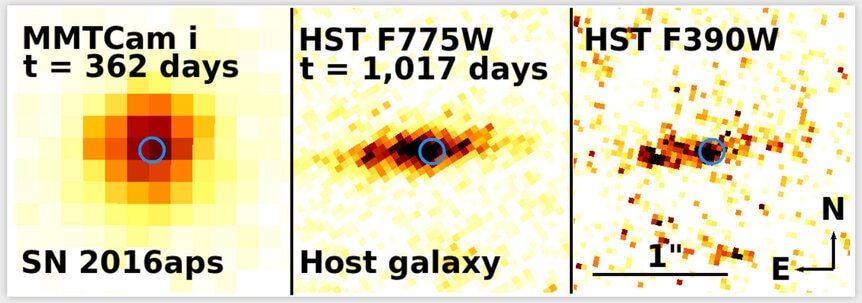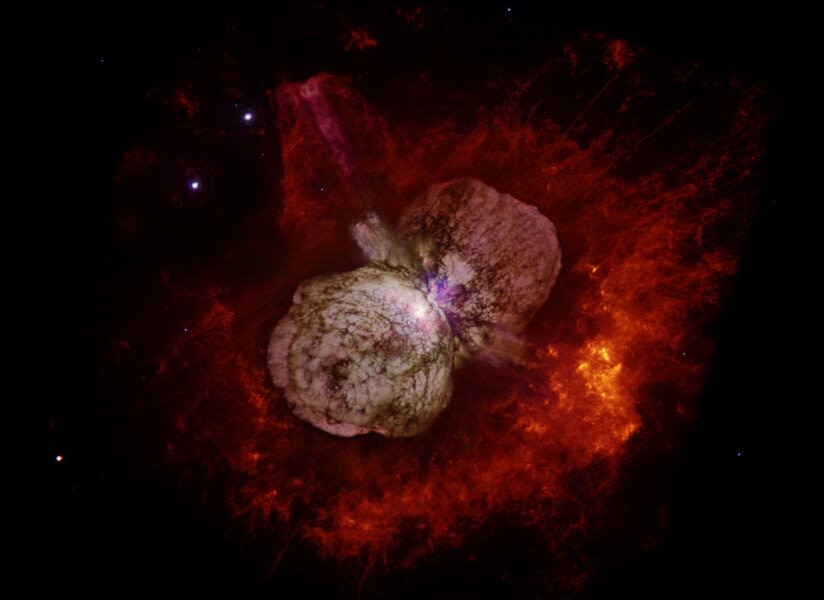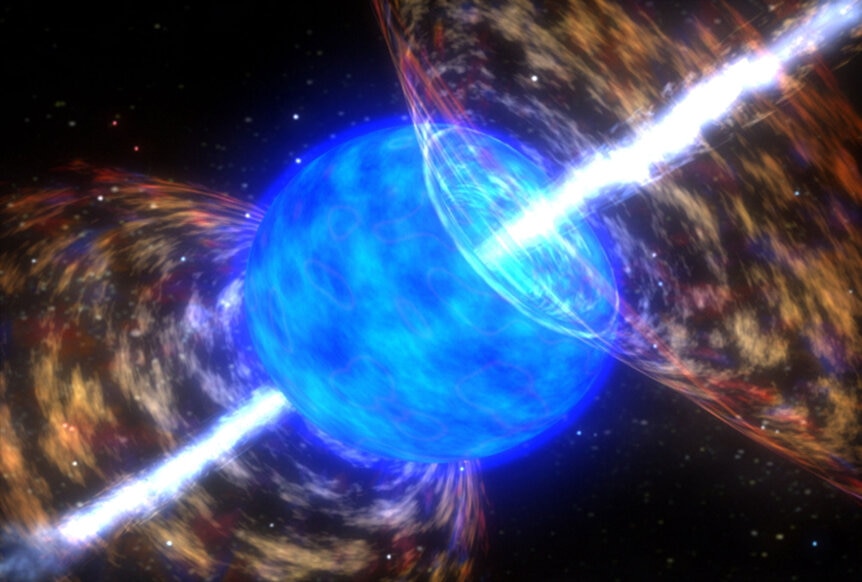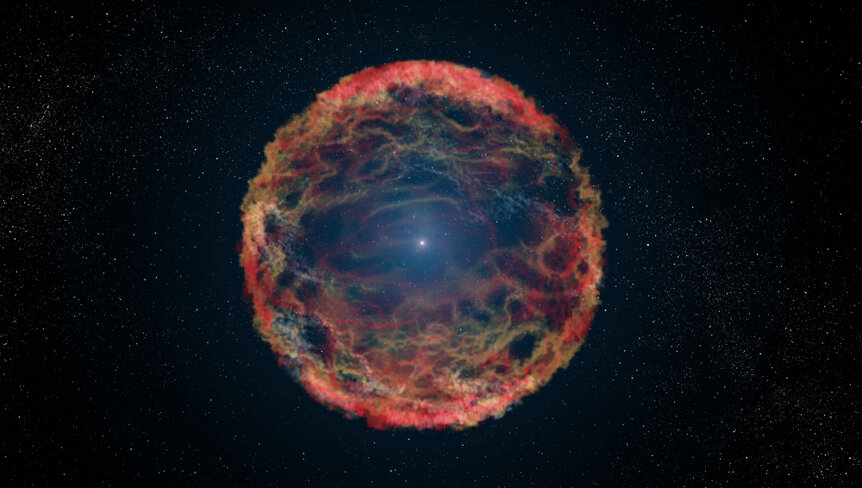Create a free profile to get unlimited access to exclusive videos, sweepstakes, and more!
Record breaker: Supernova 2016aps exploded with the energy of 100 *billion* Suns!
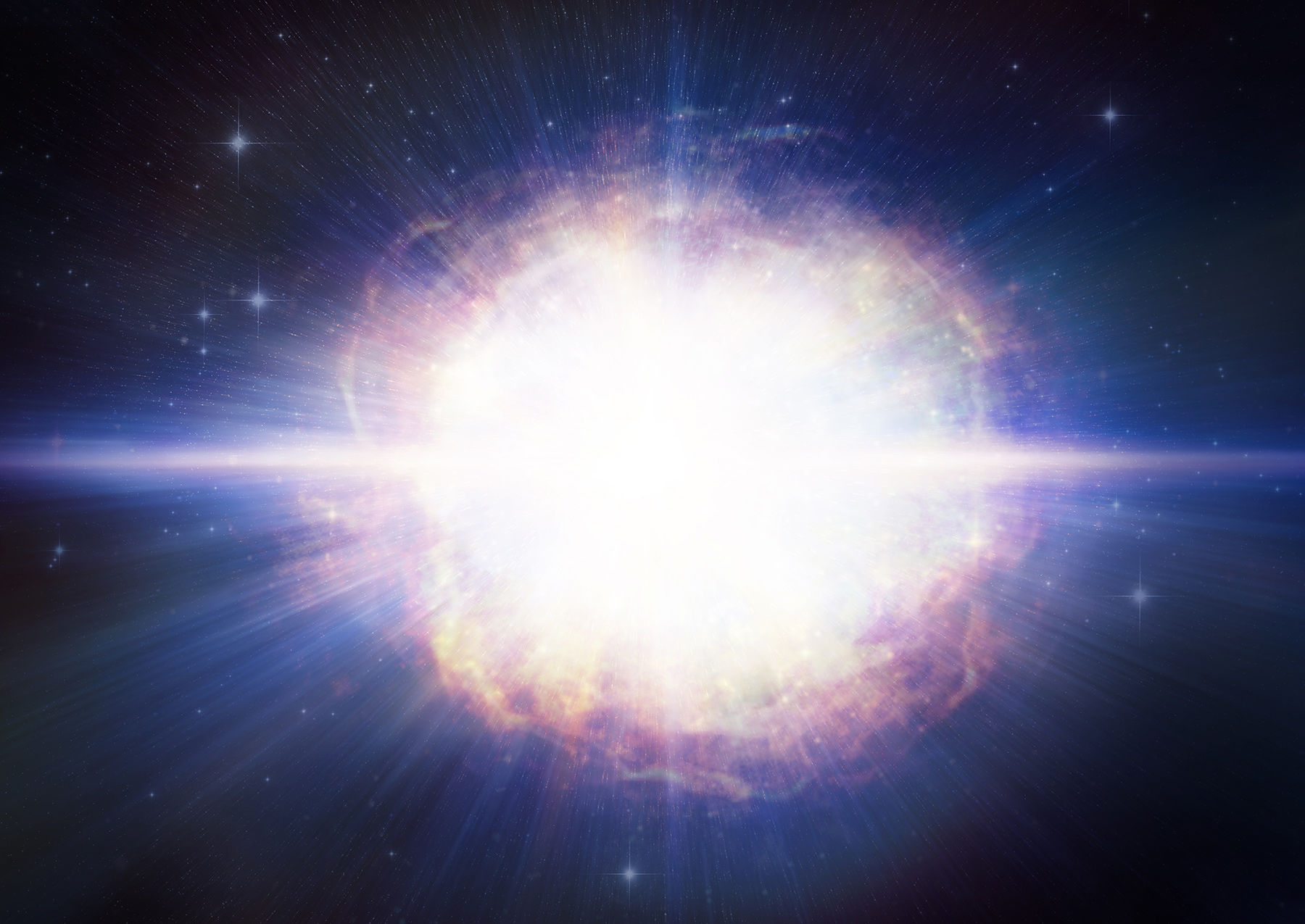
An exploding star in a small galaxy over three billion light years away has me sitting here with my eyes wide and jaw hanging open. The amount of energy it emitted in just a couple of years is equal to six times the total amount of the energy the Sun will emit over its entire seven-billion-year lifespan.
So, yeah. I’m at a dead loss for adjectives here. Titanic? Colossal? Soul-crushingly-holy-crappingly-mind-vaporizing?
Nope. They all fall short. This is the single most powerful and luminous confirmed supernova ever seen. I'm glad it happened a quarter of the way across the observable Universe!
It's called Supernova 2016aps (or SN2016aps for short) and it was discovered on February 22, 2016 in images taken with Pan-STARRS, the Panoramic Survey Telescope and Rapid Response System. What caught the astronomers’ eye about this one is that no underlying galaxy was seen, meaning this was likely coming from a relatively small galaxy, and was also an unusually bright supernova that swamped the galaxy's usual starlight. Given its whopping distance, they knew right away it had to be incredibly luminous.
It was already fading when they found it, so searching earlier images they saw it had reached peak on January 17, 2016, and doing the calculation found it was emitting energy at a rate 100 billion times the Sun’s output.
One. Hundred. BILLION. That’s roughly as much energy as the entire Milky Way galaxy emits. Anything within a few hundred light years of that star is toast.
Wait, no. Toast would be vaporized. So very, very hot toast.
The explosion was so much more powerful than the usual run-of-the-mill supernova (which is only extremely terrifying) that the normal mechanism that blows stars up must not be the cause here. Something special happened. Maybe several somethings.
The most likely case is that this was an extremely massive star, possibly (even likely to have been) more than one hundred times the Sun's mass. Getting a star that massive in the first place is nearly impossible; any single star forming in a nebula gets so energetic at that mass it tends to tear itself apart (or at least becomes violently unstable, like Eta Carinae). The authors think the star that blew up may have actually started out as two stars that merged, each with dozens of times the Sun's mass. Such things happen, though extremely rarely.
A star that massive won't live long. And when it goes it goes because of a process called pair production instability.
In this case, the core of the star (where atoms are smashed together, fuse, and generate energy) was huge, probably 50 times the mass of the Sun all by itself. The immense pressure in the center made that region unbelievably hot, over a billion degrees. Usually, in a star like the Sun, fusion makes gamma rays, a very high-energy form of light. This interacts with material around it, heating it up. When you heat up a gas it expands, and so this energy helps support the star against its own crushing gravity.
But in a superstar with 50 times that mass the gamma rays are supercharged, too. Instead of just heating up the material, they slam into it and create matter — like Einstein said, matter can be converted into energy and vice-versa. The gamma rays are converted in a pair of particles (an electron and a positron, the antimatter version of an electron). The problem here is that the energy of the gamma rays is needed to support the star, and if it converts into matter instead that support goes away. Because of the pair production, the core becomes unstable, and collapses.
Sometimes the collapse isn't total; the core just shrinks and compresses. The rate of fusion depends on how hard the material is squeezed, so this compression causes a huge pulse of energy that screams upward through the star, blasting off the outer layers. Sometimes though the core collapses all the way, and the end result is the resulting end: a supernova. Ka — and I cannot stress this enough — boom.
But even that's not enough to generate the brightness we see in SN2016aps. A lot of the energy of the explosion goes into taking the outer layers of the star and accelerating them to thousands of kilometers per second (it's again hard to exaggerate how huge an amount of energy this is; octillions of tons of matter blasted outward at a decent fraction of the speed of light!). But in this case, it's thought that the material rushing outwards slammed into gas that was already surrounding the supernova — and Hubble images reveal the star was sitting in a huge star-forming nebula, with lots of dense gas.
The exploding material hit that gas and heated it up, converting that vast energy of motion into the stupendous energy of light. So the explosion itself plus the light generated from that cosmic collision is enough to explain the ridiculous energy this supernova put into glowing.
I'm glad such events are rare. This thing is pretty scary! But the astronomers who studied it note that it’s so bright we should be able to see such events much farther than regular supernovae, so even if they're rarer, the volume of space they're visible in is so much bigger we should see these relatively often. That's good; that means there'll be plenty for astronomers to study.
Even better? They'll happen far, far away. As an astronomer I'm fascinated by supernovae (I studied them for a while in grad school) and I've always loved how they work and what they mean.
But as a human who likes living on a habitable planet? I'm glad ones like this are happening an appreciable fraction of the Universe away.
